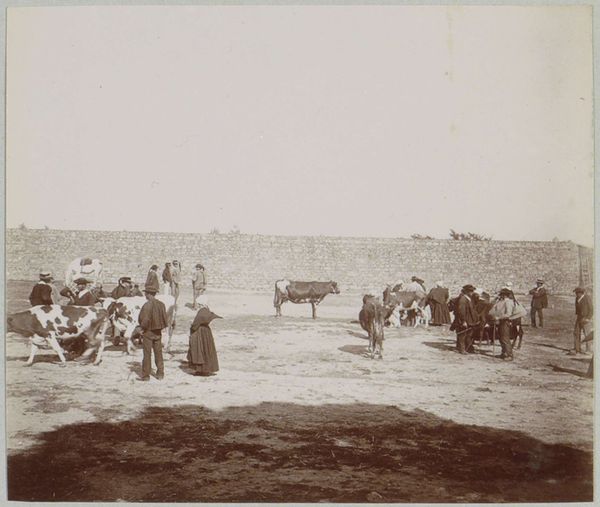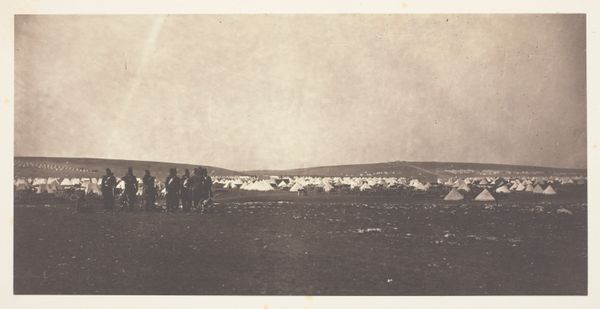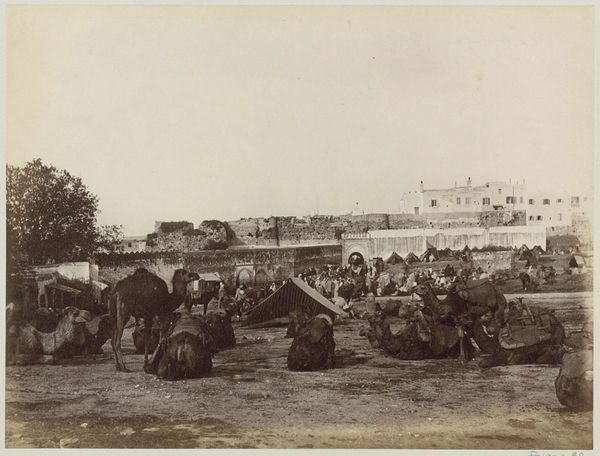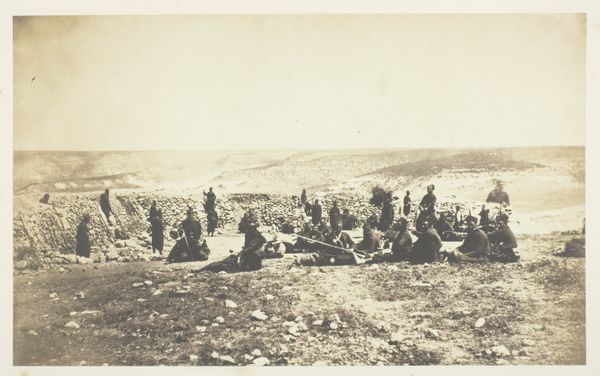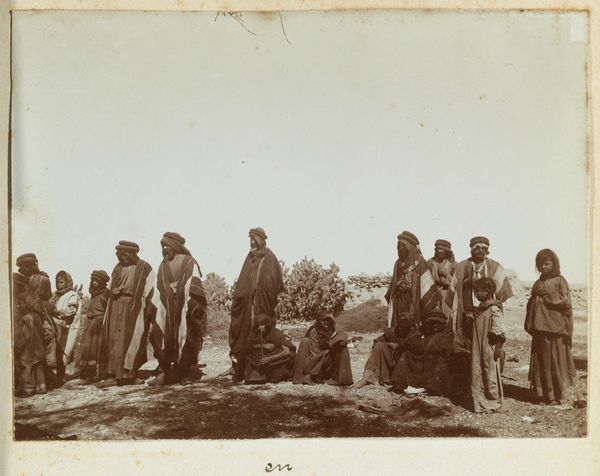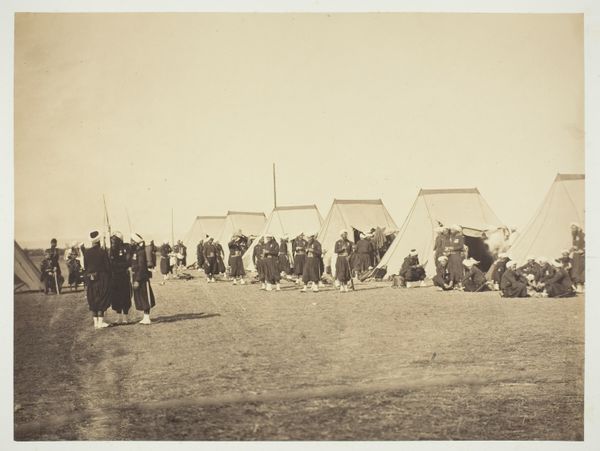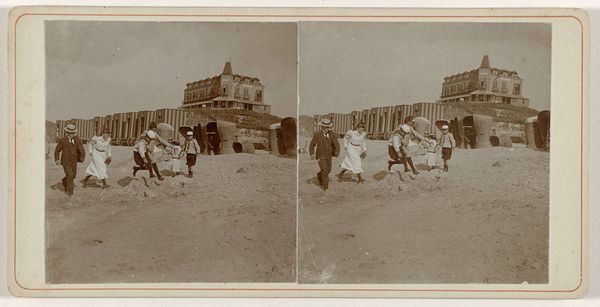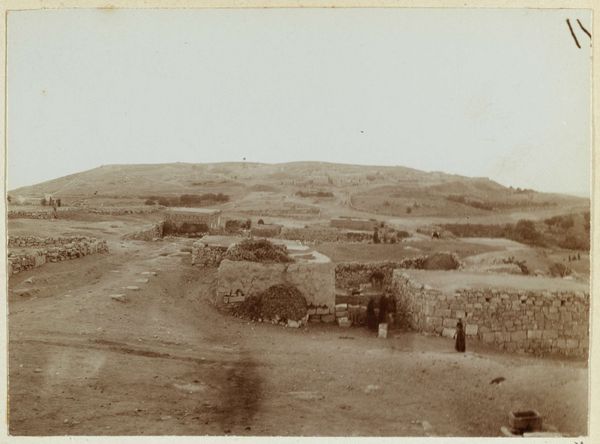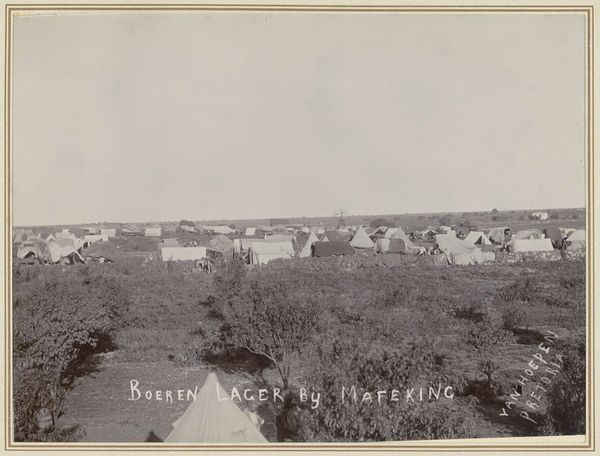
photography, gelatin-silver-print
#
impressionism
#
landscape
#
photography
#
gelatin-silver-print
#
genre-painting
#
realism
Dimensions: height 62 mm, width 101 mm
Copyright: Rijks Museum: Open Domain
This photograph, probably taken in the late 19th century by Veuve J. van Koningsveld, depicts people on a beach, likely near Scheveningen. It provides a glimpse into the leisure activities of the Dutch upper class during this period. The image's visual codes, such as the formal attire of the beachgoers and the presence of beach chairs, speak to the culture of leisure that was emerging with the rise of the bourgeoisie in the Netherlands. The grand buildings in the background suggest the presence of a well-established resort town, catering to the elite. This development reflects the broader social changes, with the growth of tourism and the commercialization of leisure time. The picture raises questions about access to such leisure activities and the social stratification of Dutch society at the time. Understanding this photograph requires us to consider the social and economic conditions that shaped the Dutch leisure industry in the 19th century. Scholarly articles and archival research into the history of tourism can provide insights into the context of this image, revealing its significance as a reflection of its time.
Comments
No comments
Be the first to comment and join the conversation on the ultimate creative platform.
